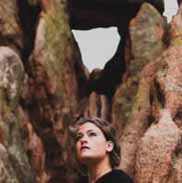Reticular Activating System Flashcards, test questions and answers
Discover flashcards, test exam answers, and assignments to help you learn more about Reticular Activating System and other subjects. Don’t miss the chance to use them for more effective college education. Use our database of questions and answers on Reticular Activating System and get quick solutions for your test.
What is Reticular Activating System?
The Reticular Activating System (RAS) is a network of neurons located in the brainstem and basal forebrain that is responsible for maintaining arousal and alertness. It is involved in regulating physiological functions such as heart rate, blood pressure, respiration, wakefulness, sleep-wake cycles, and attention. The RAS also plays an important role in filtering incoming information from the senses to prioritize more important stimuli over less important stimuli. This allows us to focus on relevant tasks and ignore irrelevant distractions.The Reticular Activating System receives inputs from various sources including the cerebral cortex, thalamus, hypothalamus, hippocampus and amygdala. These inputs are then used to determine whether or not a stimulus should be processed further or ignored entirely. For example, if you were driving down a busy street you may pay attention to cars that are close by but ignore those further away because they don’t pose an immediate threat. The RAS helps prioritize which information we attend to so that our brains can effectively process all of the sensory input it receives at any given moment. The RAS also plays a role in memory formation by helping us store relevant information while disregarding unimportant details. By helping filter out irrelevant information our brains can better focus on what matters most and store this information more effectively for later recall. Lastly, the RAS helps with decision making by processing both external cues as well as internal drives such as hunger or thirst when making decisions about how to act upon these desires or needs. It helps us weigh our options and make informed decisions quickly while ensuring we don’t become distracted by unimportant factors along the way.












